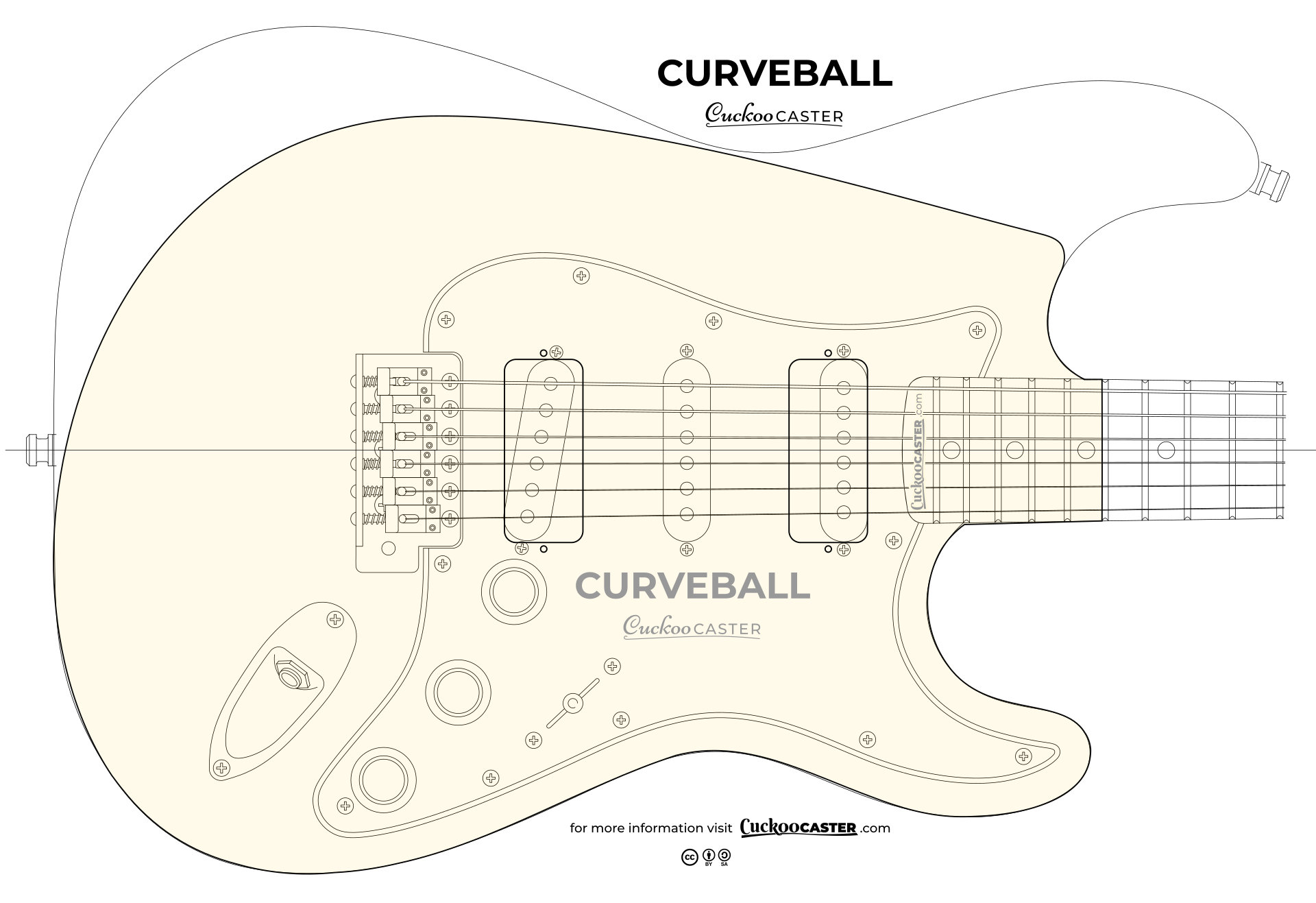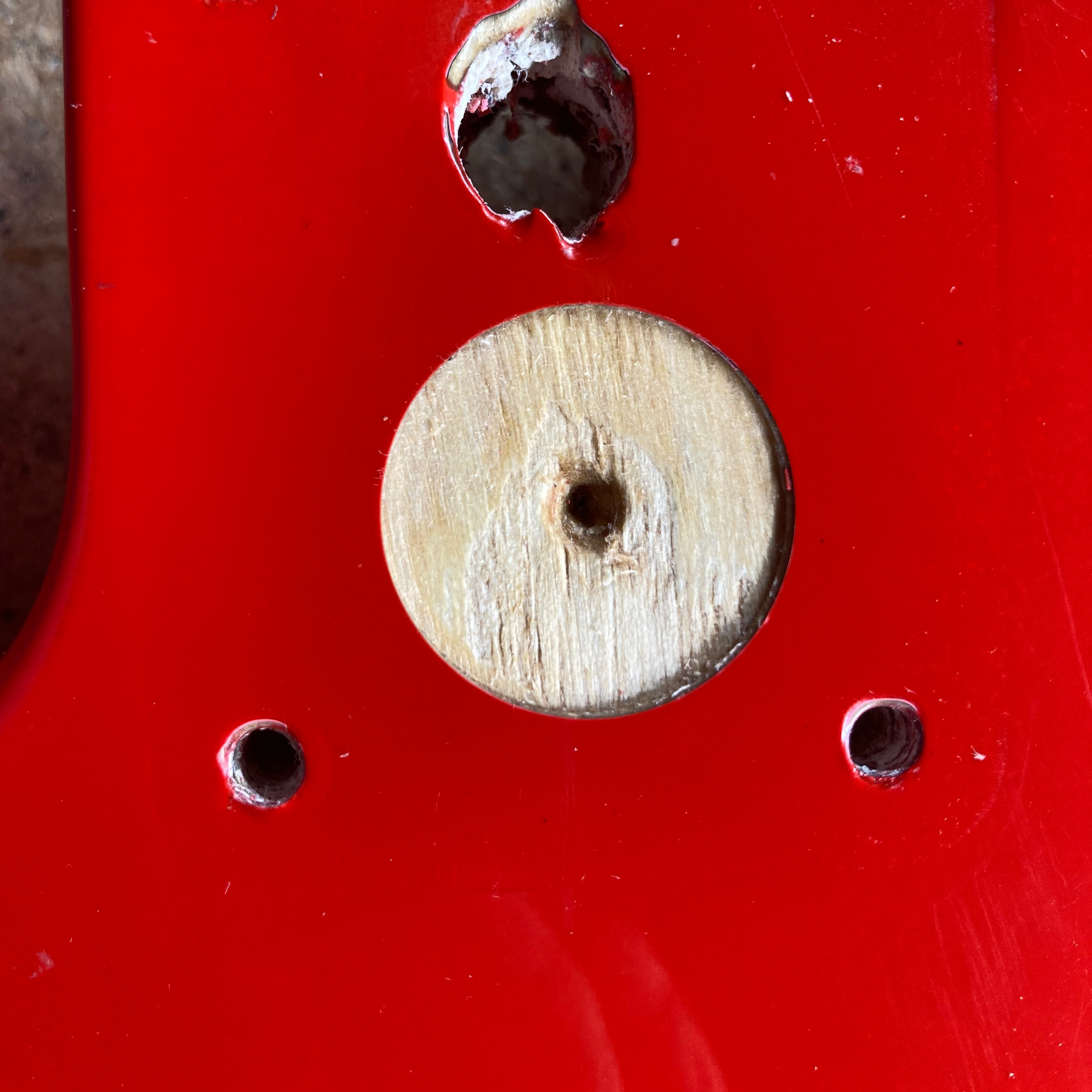The 'Curveball'...
...that came came to me as a coat hanger

CURVEBALL pickups
I haven't decided yet, but I am leaning towards the Jaguar pickups designed for Fender by Seymour Duncan.
About the Duncan Designed Jaguar Pickups
The Jaguar Guitar Pickups by Seymour Duncan for Fender feature Alnico V magnets for dynamic response and are wax-potted to reduce microphonic feedback.
You can get more information in the Article “Duncan Designed Jaguar Pickups, Analysis & Review” which I will quote (in case the page disappears in the near future):
… the Duncan Designed bridge is wound very hot relative to the bridge. Assuming 43AWG is used for the bridge, the 11.45k DC resistance is equivelent to 8.8k ohms, had it been wound with the same gauge of wire as the neck pickup. The bridge pickup has an inductance of 6.4 henries to the neck’s 2.6H, and a loaded peak frequency that is 1.6kHz lower than the neck. Fans of P-90 style pickups have no problem with the clean tone of a pickup with such a low peak frequency, but it deviates quite a bit from vintage Fender specs and tone.
Both sets use AlNiCo 5 pole pieces, though I measured about 10% stronger reading from the Pure Vintage’s AlNiCo 5 pole pieces. Where as the loaded peaks of the Duncan Designed are 2.3kHz / 3.9kHz, bridge and neck, the Pure Vintage 65 set has two matching pickups, each with a loaded (using the same load) resonant peak of 3.4kHz. So the Duncan Designed neck pickup is a bit clearer and closer to a Strat, the bridge getting close to a P-90, while both Fender Pure Vintage 65 pickups are wound closer to Telecaster pickup specs. A trivial difference is that the Fender coil wire uses a red insulation coat, supposedly enamel, where as the Duncan Design uses a more typical clear poly. Note that these DC resistances of Jaguar pickups are low relative to their higher inductance, that’s because the steel shield boosts the inductance by a good amount, nearly 500mH, or ~15%, in the case of the PV65, which is much more significant than even the steel base plate on a Telecaster bridge pickup.
Duncan Designed Jaguar Pickups, Analysis & Review by Antigua on offsetguitars.com | Mar 12, 2018

Identify your Cuckoocaster
The unique fingerprint of this instrument
Beneath the neck plate of every of my Cuckoocaster builds, you can find a 25mm round fingerprint, showing the unique structure of the wood of the instrument. If it matches the image shown here, congratulations: you got yourself this exact original Cuckoocaster!